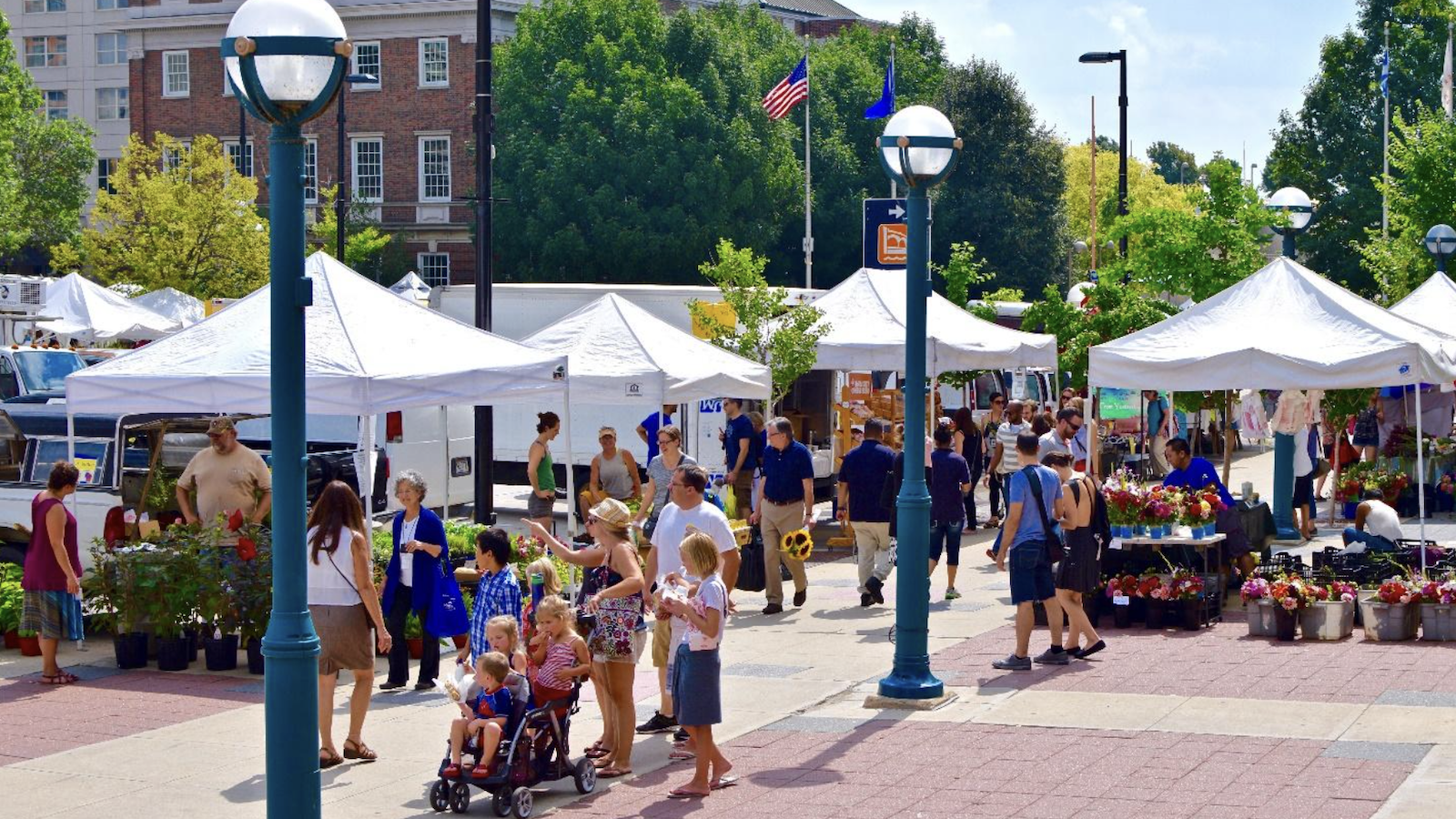Today, globalization has made its mark on nearly everything—with food being at the top of the list. A resurgence of interest in local food has been a much-needed counterweight to this phenomenon. One of the easiest ways to support local food is to shop at a farmers’ market.
The nation’s largest—the Dane County Farmers’ Market—celebrated its 50th anniversary this year.
Dane county is home to Wisconsin’s state capitol, Madison. Every year since 1972 the market has taken place on the Capitol Square, surrounding the capitol building. It was the vision of then mayor, Bill Dyke, to unite the rich rural and urban populations of this county. The picturesque site was chosen not only for its commanding backdrop, but also in an effort to revitalize a downtown that was feeling the sting of the rise in popularity of mall shopping.
The success of Dyke’s vision can be witnessed every Saturday from early April to mid-November, when up to 20,000 people descend upon Capitol Square to support the market. What began as 11 vendors has grown into the nation’s largest producers-only farmers’ market, with robust food, social and people-watching opportunities.
In a recent interview with Kinute, market manager Jamie Bugel discussed the evolution of the market and how it has stayed true to its founding mission.

The Wisconsin State Capitol, the backdrop for the Dane Co. Farmers’ Market. Photo by Dane Co. Farmers’ Market
Q: The Dane County Farmers’ Market is a producer-only market. Why has this been an important value since its inception?
A: It means that everyone you see behind the booth selling the products that are made in Wisconsin, made them themselves—they're the ones who harvested the [produce] and can give you more information about the food that you're eating and what it takes to grow [it].
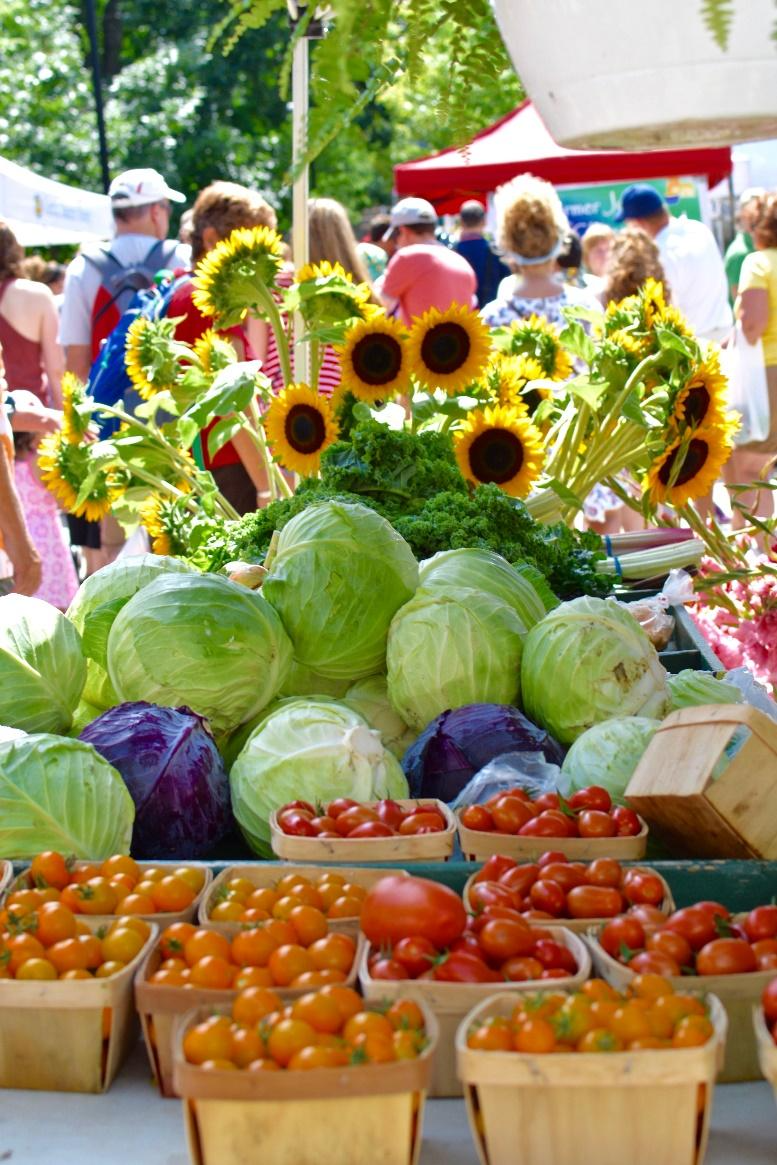
Bountiful local summer produce. Courtesy of Dane Co. Farmers’ Market
Fifty years is an incredible run for an event like this. How has the market stayed true to its founding mission over the years?
I think, continuing the producer-only requirement.
One [mission] is connecting rural and urban populations and I think the market is the best example of that—with people in urban environments not having as much access to a growing space and the farmers being able to grow incredible products and bring them to town every week to make those connections.
How has it evolved over time?
It's definitely more formalized than it was at the very beginning—anyone could just show up—now we have an application process and a waitlist to get on, which is one or two years. When it started, farmers couldn't rely on a super successful market like this for a living and now they can, which is amazing. Farming is still very hard, and most farmers have off-farm income as well but having the market as a regular event where they can sell out is more certainty than you normally get in farming.
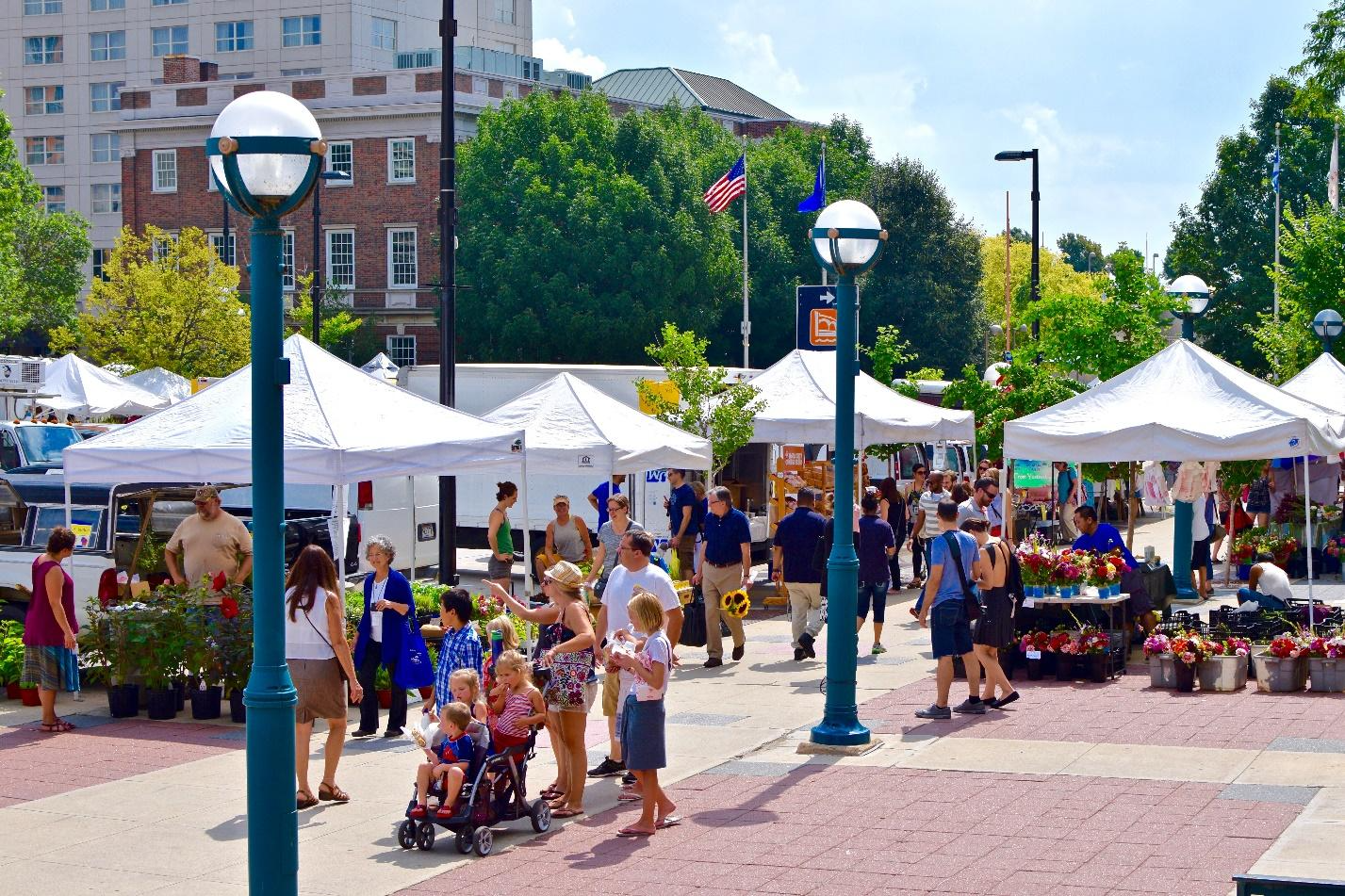
Market patrons. Courtesy of Dane Co. Farmers’ Market
Is there a holiday or winter market associated with the farmers market?
Our holiday market is [Saturdays] Nov. 19 [through] Dec. 17 at Monona Terrace. January through the beginning of April we go to Garver Feed Mill for the late winter market.
Does anything differentiate the holiday market from other markets?
It's still mostly food based however, some of our producers put together gift boxes, there's more holiday themed baked goods, and decorative wreaths and gourds
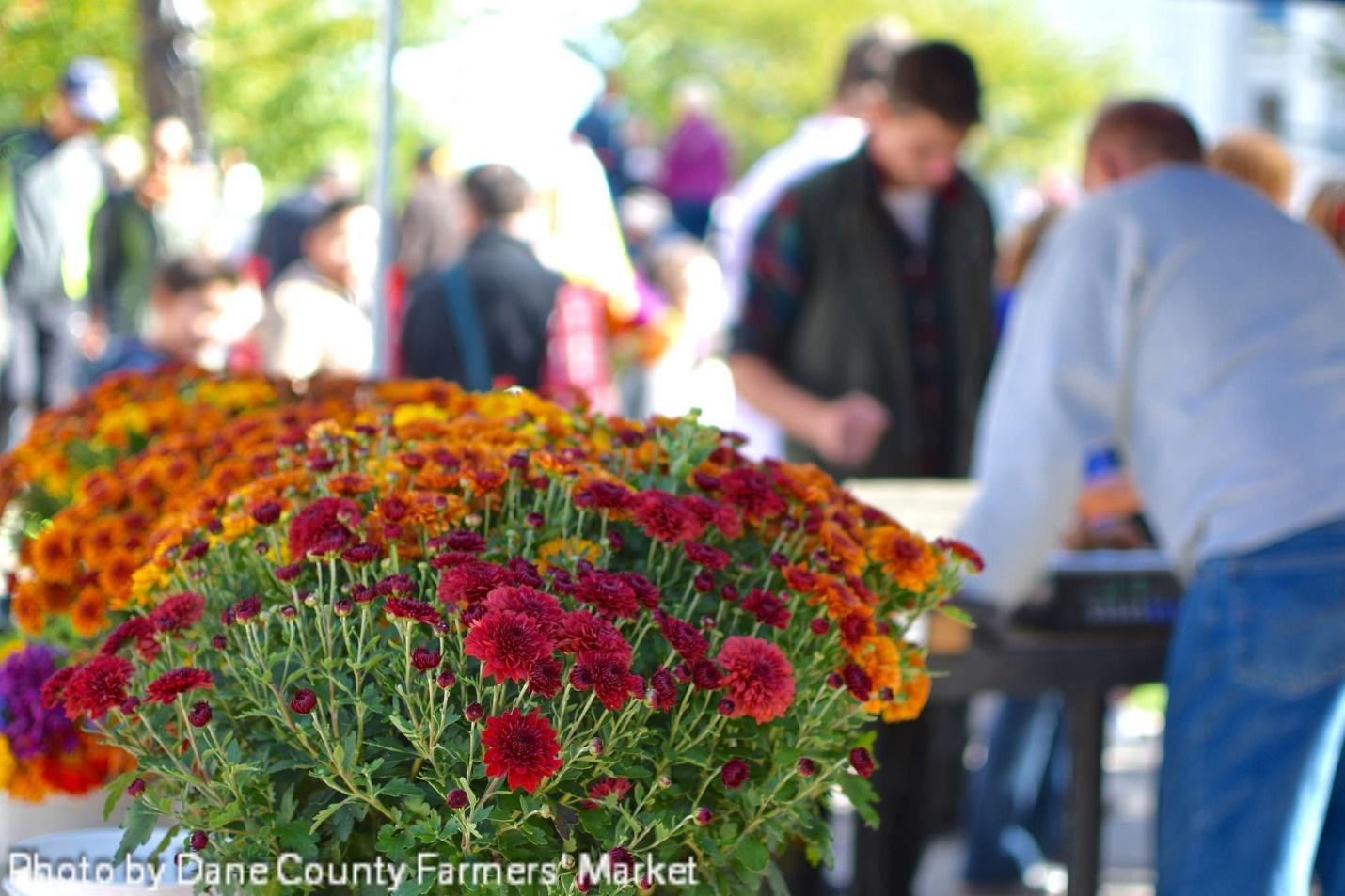
Fall mums at the market.
Madison has a reputation of having a vibrant culinary scene. Can you talk about the relationship between some local chefs and the market?
There are chefs who I see at the market every single week shopping for their restaurants, which is amazing. They support the farmers and in turn the farmers are able to share a product that maybe a regular consumer wouldn't buy for their dinner, but they see it in the restaurant and then they want to try it themselves.
The market accepts food assistance payments to improve access to healthy local food offerings for lower income households. How utilized is this among market goers?
It's called SNAP, Supplemental Nutrition Assistance Program. It's a benefit you get if you qualify. You can use it at the market year-round. In addition to that, there is a program called Double Dollars in Dane County, which matches up to $25. If you take $25 out of your benefits, we give you $25 for free, so you get $50 you can use at the market. It really helps people afford fresh and local food. It’s very popular.
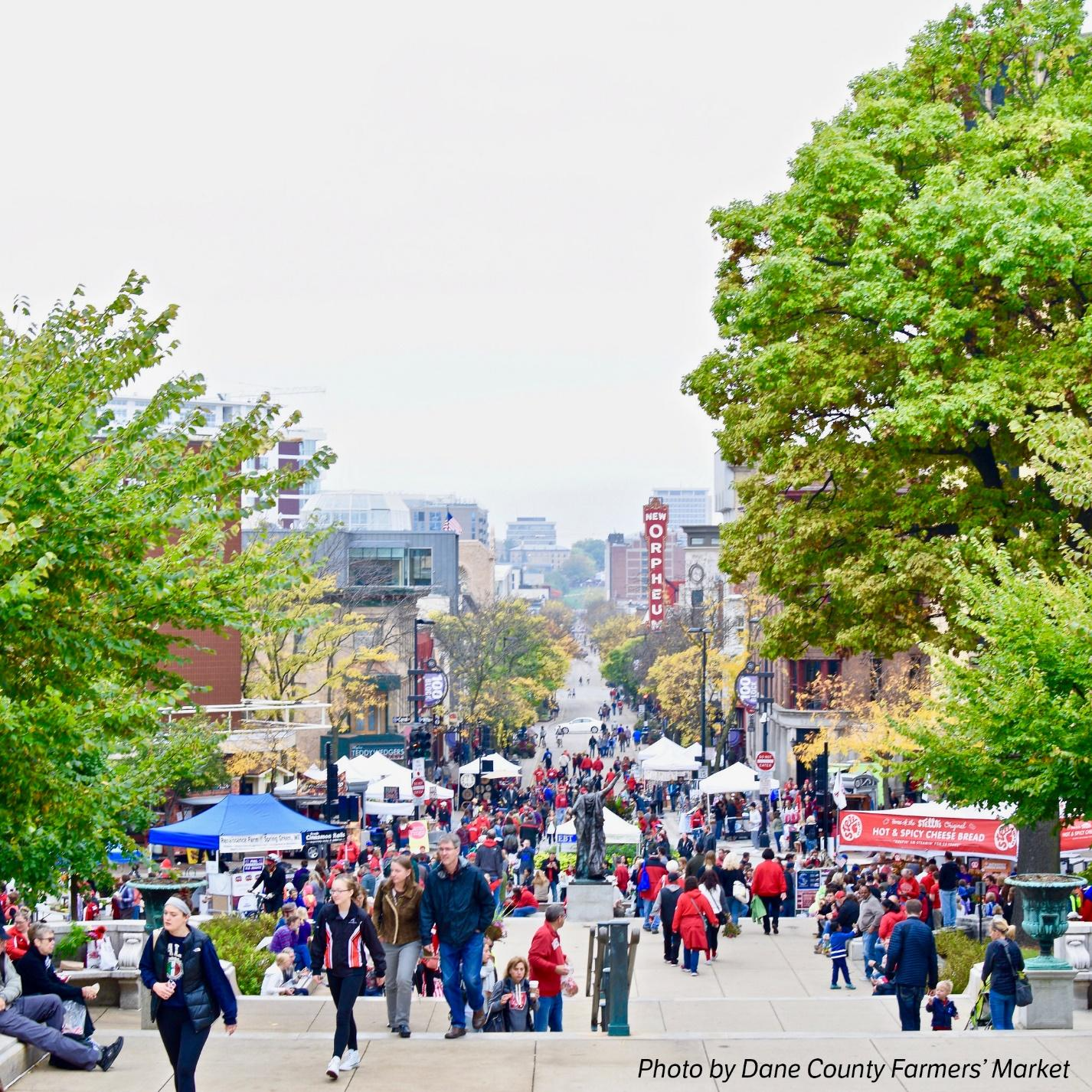
Looking down Madison’s iconic State St. from Capitol Square on market day.
Change has been constant throughout the life of the market. Is there anything on the horizon that excites you about the future for the market?
Coming out of COVID, it's so nice to be back around The Square. It’s also a good reminder that trying some new things, sharing a new product, or a different way of marketing is a great way to have [people] shop locally in our agricultural system—which Dane County is so rich in.
